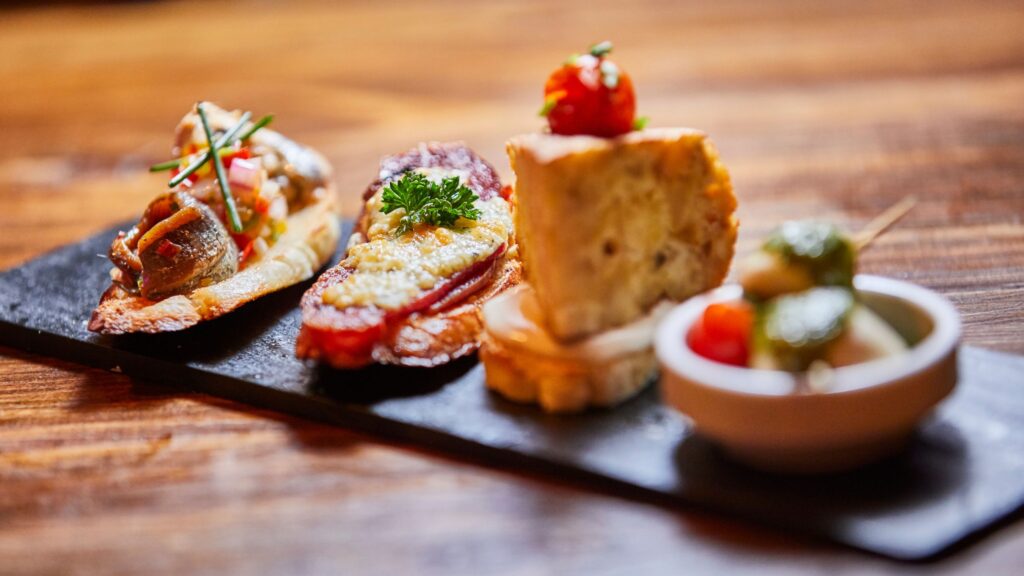
The Evolution of Spanish Cuisine – A Journey Through Flavors and History
A Culinary Mosaic Forged Through Centuries Spanish cuisine is a living archive of the civilizations that shaped the Iberian Peninsula. Its evolution spans millennia, beginning
Spanish cuisine is a living archive of the civilizations that shaped the Iberian Peninsula. Its evolution spans millennia, beginning with the Romans, who introduced olive cultivation, breadmaking, and wine. These staples still form the foundation of the Spanish diet today. When the Moors ruled southern Spain from the 8th to the 15th century, they enriched local cooking with rice, citrus, almonds, saffron, and new methods of preserving and seasoning food. At the same time, Sephardic Jewish communities contributed slow-cooked stews, vegetable-based dishes, and methods of conserving food through brining and pickling.
The result? A unique and complex cuisine born of multiculturalism—where each dish tells a layered story of trade routes, religious traditions, agricultural practices, and adaptation to geography.

The culinary landscape of Spain changed dramatically after the discovery of the Americas in the late 15th century. Explorers brought back now-indispensable ingredients: tomatoes, potatoes, bell peppers, corn, chili, vanilla, and chocolate. These novelties were initially met with skepticism but eventually transformed the Spanish kitchen forever. Tomato-based dishes like salmorejo or paella with peppers would not exist without this transatlantic exchange.
In Andalusia, the fusion became especially vibrant. Local cooks embraced these ingredients while preserving ancient techniques like salt-curing ham, cold soups, and slow-simmered legumes, creating recipes that still form the core of family meals across southern Spain.
Traditional Andalusian cuisine is a perfect reflection of the Mediterranean diet: olive oil, seasonal vegetables, legumes, fish, and modest portions of meat. But its richness lies in simplicity, storytelling, and sustainability. Here are a few examples of iconic dishes shaped by history:
Many of these dishes began as “cuisine of the poor,” born of scarcity and resourcefulness. Yet over time, they became expressions of pride and culinary excellence—served in Michelin-starred restaurants as well as family homes.

One of the most fascinating aspects of Spanish cuisine is its fierce regionalism. From the Basque Country to Galicia, from Catalonia to Andalusia, every region has its own techniques, ingredients, and philosophies. Spanish food is not one monolith—it is many traditions woven together by geography and history.
Seville, the heart of Andalusia, is an ideal place to explore this legacy. Its vibrant food markets, tapas culture, and intergenerational recipes offer a tangible way to experience the evolution of Spanish cuisine firsthand. Whether tasting freshly made ensaladilla rusa at a local bar or watching a chef slice jamón with surgical precision, you are not just eating—you are tasting centuries of craftsmanship, memory, and place.
Join a Local Food Experience in Seville and let Spain’s history come alive through its most authentic flavors.

A Culinary Mosaic Forged Through Centuries Spanish cuisine is a living archive of the civilizations that shaped the Iberian Peninsula. Its evolution spans millennia, beginning

A Timeless Beverage with Ancient Roots Sangria is far more than a colorful summer refreshment—it is a cultural symbol deeply embedded in the fabric of

Explore the Heart of Andalusian Wine Culture Experience the essence of Andalusia with our full-day Sherry Wine Tasting Tour from Seville. This unforgettable journey takes

Imagine strolling through the colorful streets of Triana, one of Seville’s most authentic neighborhoods, guided by a local expert who can turn a slice of

Discovering the Beauty of Authentic Sevillian Dishes In Seville, true culinary treasures often come disguised behind rustic, imperfect appearances. The Ugly Food Tour celebrates these

Understanding Tapas Culture in Seville In Seville, tapas are much more than just food—they are a lifestyle. Going out for tapas means moving from bar
Click here to download the pdf
Explore Local Food Experiences in your city

As it seems you come from alcazarsevillatours.com, you get 20% off with the code alc20 on your next booking in localfoodexperiences.com